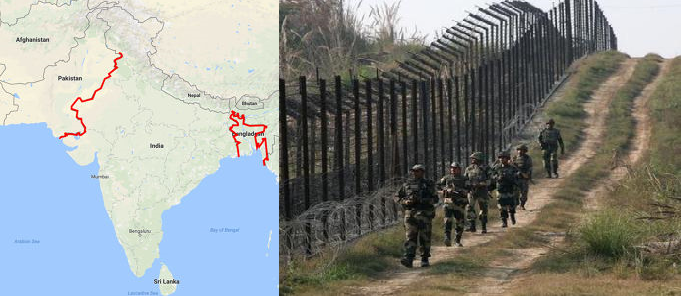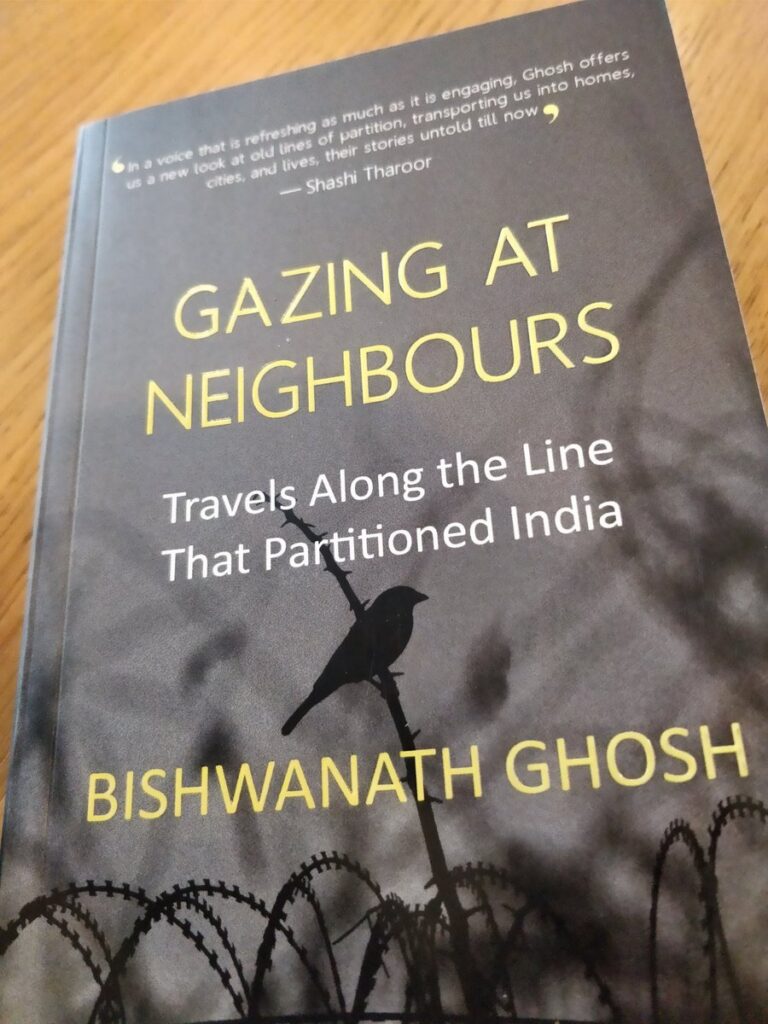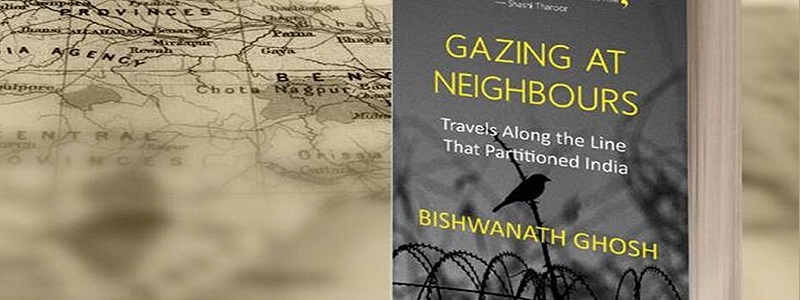The book by Indian author Bishwanath Ghosh, – ‘Gazing At Neighbours: Travels along the line that partitioned India’ speaks about the history of Radcliff line and its present day Socio-geographic texture as well as a memoir of the partition scar.
In one of the powerful fictional pieces on India’s partition, ‘Nilkantha Pakhir Khonje,’ a character called Isham Khan laughed at the two quarrelling factions as he thought, “Kaar Dyash, Ke ba dibe, ke ba nibe?” (Whose country is this? Who will give to whom and who will take?) The relevance of the above sentence written by Atin Bandyopadhyay back in the 1950s – 1960s is resonated when the author of ‘Gazing At Neighbours,’ Bishwanath Ghosh, observes in the very book, “My eyes, however, couldn’t tell the merger, rather the separation, between India and Pakistan. The land leading up to the small tree, as well as the portion beyond it, looked the same. But then, Partition is about drawing a line across sameness.”
Writing Style of the travelogue:
Partition is a painful gaping wound that still disturbs the people of the Indian Subcontinent – the three countries – India, Pakistan and Bangladesh. Eminent Indian authors as well as the authors from the two other countries had written down many partition tales. Bishwanath Ghosh’s travelogue ‘Gazing At Neighbours’ can be remarked as a seamless continuation of those tales, although there’s no fictionality in it.
Being a minute observer, Mr. Ghosh has written down about his detailed travel as picturesquely possible with no intentional use of emotional adjectives which would pepper the reader’s feelings. But the opposite happens – the reader is bound to feel disconcerted while leafing through the pages.
Maybe, that’s one of the reasons of comparing the writing style of Bishwanath Ghosh with that of the eminent Bengali writer Atin Bandyopadhyay. In ‘Nilkantha Pakhir Khonje,’ too, Atin Bandyopadhyay chose to describe the characters, their respective stories as vivid and emotionless as possible, leaving a subtle, disconcerting impact on the reader. Coincidentally, Bandyopadhyay was a journalist like Ghosh.

A Summary of ‘Gazing At Neighbours: Travels along the line that partitioned India’
This book is an ode to the completion of the 70th anniversary of India’s partition. The author had lucidly narrated the significance of the Radcliff line that partitioned India along with its geography. He had observed how contrasting the lines appeared in Punjab and Bengal. To him, the 553 Kms of Punjab’s partition line was vibrant green while the Bengal’s 4096 Kms appeared melancholic.
He started his journey from Amritsar, visited Wagah Border, Ferozepur, Hussainiwala and Dera Baba Nanak. After the Punjab part, he covered Bongaon, Jalangi, Murshidabad, Maldah, Coochbehar, Dinhata, Guwahati, Shillong, Dawki, Silchar, Karimganj, Agartala, Boxanagar and Sonamura.

While narrating his travel, he focused on the ordinary residents living in those areas, their perspectives about the partition and difficulties they had faced during and after partition. He appeared uneasy as an Indian author where he expressed how dearly liked the music of one Pakistani song being played during the Flag lowering ceremony on the Wagah Border but could share his feelings with no one. One can probably not stop one’s tears when he described the plight of a family after the Radcliff line passed right through the courtyard of the house. In one part of the book, he narrated about the occasional humanitarian outlook of the BSF personnel standing on guard over the barbed wires separating Bangladesh and India.
The treatment of the Partition as a subject in ‘Gazing At Neighbours’:
Mr. Ghosh had described the relevant history of the places he travelled along the Radcliff line with the present social and cultural texture. And he chose to conclude his description with an emphatic insight whose excerpt is provided below:
……” It is one of the greatest frauds on the people to suggest that religious affinity can unite areas which are geographically, economically, linguistically and culturally different.” …
Throughout the length of the book, he went on dishing out interesting anecdotes in his usual light hearted witty style. Though light hearted, it managed to kindle up quite a few sparks of strong emotions. There was a hint of diplomacy in his narration which is pretty obvious when one is addressing sensitive subjects like Partition.
Our Conclusion – To recommend or not to?
If you are a travel lover, if you love reading travelogues and if the incident of India’s partition disturbs you as us, we highly recommend the book ‘Gazing At Neighbours’ to you. The book is available in the Kindle app as well as the Amazon store. So please do read and share your views in the comment section below.
Click to read the book. Or buy it from Amazon.
Disclaimer:
We are a participant in the Amazon Services LLC Associates Program. We may earn a small commission if you purchase products via our website. Your purchases support us in bringing you informative and fun-filled articles.

